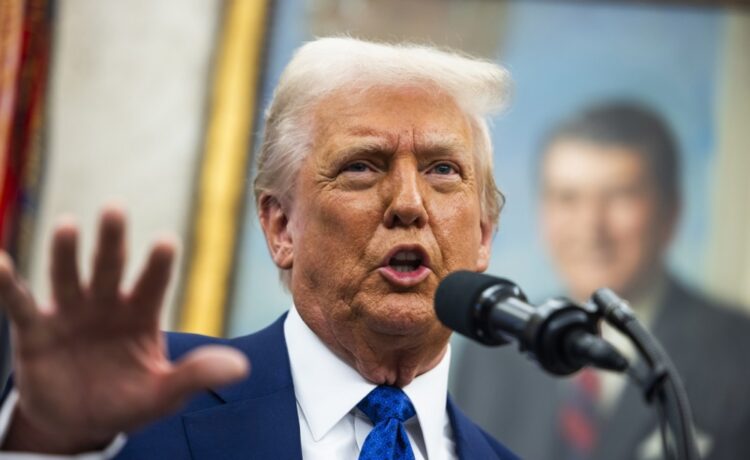The euro whipsawed against the US dollar on Thursday, as markets scrambled to respond to Donald Trump’s announcement of “immediate” negotiations to end the Ukraine war and subsequent pledge that additional tariffs were imminent.
The euro initially strengthened around half a percentage point against the dollar to hit a high of $1.044, after the US president said on Wednesday that he had spoken to Russia’s Vladimir Putin and Ukraine’s Volodymyr Zelenskyy about ending the nearly three-year-long conflict.
But these gains were quickly reversed after Trump said on Thursday afternoon that “reciprocal tariffs” would be formally announced later that evening, with the euro falling to a low of $1.038.
“THREE GREAT WEEKS, PERHAPS THE BEST EVER, BUT TODAY IS THE BIG ONE: RECIPROCAL TARIFFS!!! MAKE AMERICA GREAT AGAIN!!!” Trump wrote on Truth Social, his media platform.
Trump has repeatedly threatened to match the tax rate other countries charge on imports from the US. “If they charge us, we charge them,” he said last week.
In a further twist, just before 5pm Brussels time, the euro had made an almost full recovery, trading back around $1.043.
The market turbulence comes amid an intense debate among economists about the overall impact of Trump’s policies on the eurozone economy and euro-dollar exchange rate.
Analysts at Bloomberg and Goldman Sachs have estimated that Trump’s campaign pledge to impose a “universal” levy of 10-20% on all US imports would weaken eurozone GDP by around 1 percentage point – thereby potentially plunging the bloc’s already weak economy into recession.
However, many analysts also suspect that Trump’s campaign pledges to cut regulations and enact mass deportations could lead to an inflationary resurgence in the US, thereby forcing the Federal Reserve to maintain high interest rates, thus strengthening the dollar and boosting the competitiveness of European exports.
One senior EU official suggested on Thursday that there is no consensus among eurozone finance ministers about the impact of Trump’s policies on the euro-dollar exchange rate.
“Consensus is a bit of a big word – it would require a clear understanding of what is going to come our way,” the official said. “I think the defining feature of the present situation [is] that we don’t know what is going to come.”
The official also noted that the impact of Trump’s policies will be discussed by eurozone finance ministers on Monday.
“This discussion will primarily be about scenarios, sort of mental exercises, sort of painting broad pictures of what might happen in certain circumstances,” the official said.
Trump’s announcement also comes as EU officials scramble to mount a response to Trump’s pledge earlier this week to introduce 25% duties on all US imports of aluminium and steel. The tariffs are set to come into effect on March 12.
Since Trump’s return to the White House last month, he has also introduced an additional 10% levy on all imports from China and threatened to impose 25% duties on Mexico and Canada.
The EU’s current average tariff rate is 3.5%, slightly below the US’s average of 3.95%, according to economists at ING. However, the bloc’s tariff rate is larger than the US’s in many critical export-dependent sectors, including cars, food, and chemicals.
[OM]














